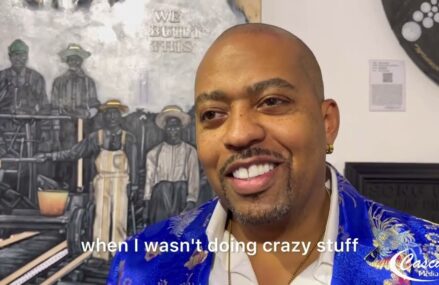Redding was born in Dawson, Georgia, U.S., the fourth of six children, and the first son, Otis Redding, Sr., and Fannie Roseman. Redding senior was a sharecropper and then worked at Robins Air Force Base, near Macon, and occasionally preached in local churches. When Otis was three the family moved to Tindall Heights, a predominantly African-American public housing project in Macon.[3] At an early age, Redding sang in the Vineville Baptist Church choir and learned guitar and piano. From age 10, he took drum and singing lessons. At Ballard-Hudson High School, he sang in the school band. Every Sunday he earned $6 by performing gospel songs for Macon radio station WIBB,[4][5] and he won the $5 prize in a teen talent show for 15 consecutive weeks.[6] His passion was singing, and he often cited Little Richard and Sam Cooke as influences. Redding said that he “would not be here” without Little Richard and that he “entered the music business because of Richard – he is my inspiration. I used to sing like Little Richard, his Rock ‘n’ Roll stuff… My present music has a lot of him in it.”[7][8]
At age 15, Redding left school to help financially support his family; his father had contracted tuberculosis and was often hospitalized, leaving his mother as the family’s primary income earner.[3] He worked as a good digger, as a gasoline station attendant, and occasionally as a musician. Pianist Gladys Williams, a locally well-known musician in Macon and another who inspired Redding, often performed at the Hillview Springs Social Club, and Redding sometimes played piano with her band there.[9] Williams hosted Sunday talent shows, which Redding attended with two friends, singers Little Willie Jones and Eddie Ross.[10]
Redding’s breakthrough came in 1958 on disc jockey Hamp Swain’s “The Teenage Party,” a talent contest at the local Roxy and Douglass Theatres.[11][5] Johnny Jenkins, a locally prominent guitarist, was in the audience and, finding Redding’s backing band lacking in musical skills, offered to accompany him. Redding sang Little Richard’s “Heebie Jeebies.” The combination enabled Redding to win Swain’s talent contest for fifteen consecutive weeks; the cash prize was $5 (US$44 in 2019 dollars[12]).[13] Jenkins later worked as lead guitarist and played with Redding during several later gigs.[14] Redding was soon invited to replace Willie Jones as the frontman of Pat T. Cake and the Mighty Panthers, featuring Johnny Jenkins.[10] Redding was then hired by the Upsetters when Little Richard abandoned rock and roll in favor of gospel music. Redding was well paid, making about $25 per gig (US$222 in 2019 dollars[12]),[3][4] but did not stay long.[15] In mid-1960, Otis moved to Los Angeles with his sister, Deborah, while his wife Zelma and their children stayed in Macon, Georgia.[16] In Los Angeles, Redding recorded his first songs, including “Tuff Enuff” written by James McEachin, “She’s All Right,” written with McEachin, and two Redding wrote alone, called “I’m Gettin’ Hip” and “Gamma Lamma” (which he recorded as a single in 1961, under the title “Shout Bamalama”)



